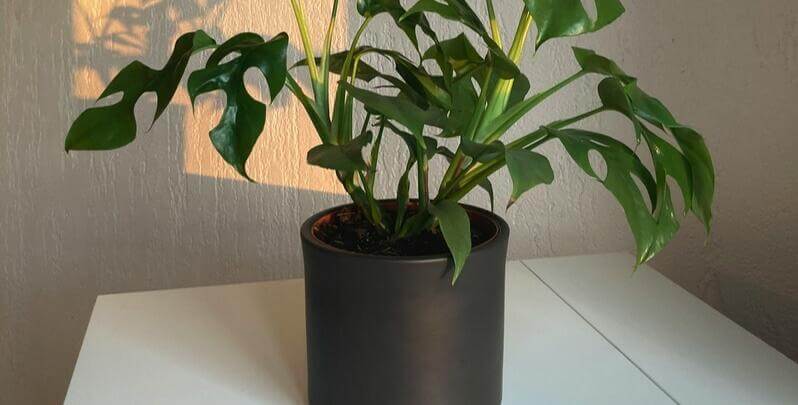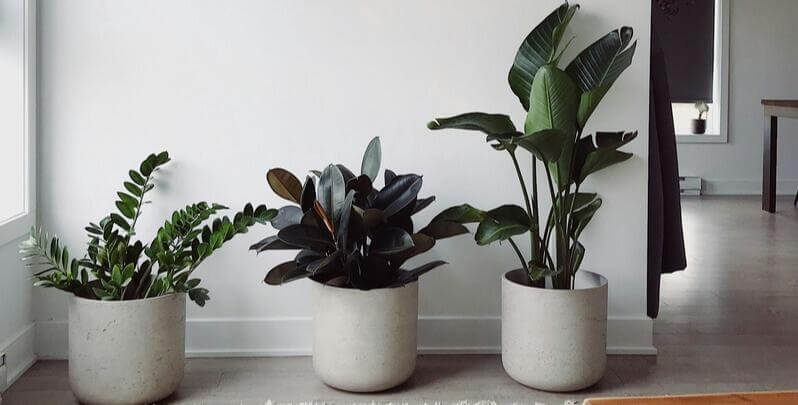Do Indoor Plants Improve Air Quality?

Indoor air quality is a crucial aspect of maintaining a healthy indoor environment.
However, it is often compromised by pollutants like volatile organic compounds, carbon dioxide, and others. Indoor plants are frequently lauded both for their aesthetic value and their ability to purify the air. But how effectively do indoor plants improve air quality?
Research varies on whether potted plants can significantly filter air and enhance air quality in real-life settings. This article delves into the interaction between houseplants and indoor pollutants, exploring if integrating flora into your home or small office is a practical approach to air purification. We’ll look at what the studies say about their ability to absorb harmful gases, regulate humidity, and contribute to overall cleaner air.

The Science Behind Plants and Air Quality
Plants engage in the process of photosynthesis. This is where they absorb carbon dioxide and release oxygen, contributing to indoor air purification. This biological process has positioned plants as potential natural solutions to enhance air quality, especially in spaces where mechanical ventilation may be limited. Studies, including a well-known NASA study, have highlighted how certain plant species can remove common indoor air pollutants like formaldehyde and benzene.
Factors Affecting The Purification Capabilities of New Plants
However, the efficacy of plants in large indoor spaces varies. A potted plant in a sealed chamber can absorb specific pollutants efficiently. However, a real-world, less controlled environment – like a home – proves more challenging. Several factors significantly influence outcomes. These include:
- air exchange rates
- floor space
- the presence of soil and other plants
Despite these variables, integrating plants into indoor gardening practices remains beneficial. Research shows that plants like Ficus benjamina (aka Weeping Fig or Ficus tree), Sansevieria trifasciata laurentii (Snake plant or Mother-In-Law’s Tongue) and Spathiphyllum ‘Mauna Loa’ (Hawaiian Peace Lily) can improve air humidity and help clean the air by absorbing toxins. Although not the most effective way to filter all pollutants, their addition to indoor spaces offers aesthetic and environmental benefits, supporting a healthier indoor atmosphere.
Types of Indoor Air Pollution
Indoor air pollution can degrade air quality and impact health. Common pollutants include volatile organic compounds (VOCs) emitted from paints, furniture, and cleaning products, as well as nitrogen dioxide from combustion processes and carbon dioxide from respiration.
Humidity plays a significant role in indoor air quality. High humidity levels can promote the growth of mould and mildew, while low humidity can increase the concentration of airborne pollutants. Managing relative humidity indoors is essential for maintaining clean air and preventing the accumulation of harmful substances.
Researchers found that certain houseplants, such as Ficus elastica and English ivy, can absorb these pollutants, although their effectiveness varies with conditions. These plants operate best in sealed environments with controlled air exchange, where they can systematically clean the air. It makes them highly-valuable additions to indoor spaces for their aesthetic and air-purifying benefits.
The Effectiveness of Indoor Plants in Improving Air Quality
Specific Plants and Their Purifying Capabilities
Research into the air purification abilities of common houseplants shows that while plants like Aloe Vera can absorb pollutants like formaldehyde and benzene, the effectiveness largely depends on environmental conditions. In controlled, sealed chambers, these plants perform significantly well. However, scalability to larger, real-world conditions and indoor spaces poses challenges. To enjoy substantial air filtration benefits in a typical room, you’d require a dense collection of plants.
Limitations of Indoor Plants
Despite the positive impacts, the overall effectiveness of plants in real-life settings is modest. Systematic reviews and extended studies suggest that the volume of air that one plant can clean is relatively small compared to the entirety of air space in a room. Consequently, while indoor plants contribute to reducing levels of certain pollutants and absorbing carbon dioxide, they cannot replace more comprehensive air filtration systems. Although significant in sealed environments, their benefits become diluted in open, everyday spaces where air exchange is continuous and uncontrolled.
All in all, while indoor plants provide many benefits, including psychological and aesthetic improvements, their role in air quality management should be integrated with other strategies for optimal results.
Practical Tips for Using Indoor Plants to Improve Air Quality

Choosing the Right Plants
Selecting the right plants is crucial for enhancing indoor air quality. Choose species known for their air-purifying capabilities such as spider plants, which can absorb carbon monoxide and other toxins. Peace lilies and bamboo palms are also excellent for removing numerous air pollutants and require minimal sunlight, making them ideal for indoor environments.
Optimal Placement and Care
To maximise the air purification benefits, place plants in areas where potentially toxic pollutants are likely to be more concentrated, such as kitchens or rooms with electronics. Give each plant enough space for maximum air circulation to enhance its air-cleaning efficiency. Regularly dust the leaves to keep the plants’ pores open and functioning.
Maintaining Healthy Indoor Plants
Healthy plants are more effective at cleaning the air. Water them as necessary – overwatering can lead to mould growth, which counteracts air purification efforts. Use well-draining soil and pots with drainage holes to prevent excess water from accumulating.
Complementary Strategies
While plants can improve indoor air quality, they are most effective when used in conjunction with other air purification strategies. Consider using air purifiers and maintaining good ventilation alongside your indoor gardening to create a healthier living space.
The Role of Indoor Plants in Air Quality Management
When it comes to the question of “Do indoor plants improve air quality?”, the notion does have its roots in truth. However, their effectiveness varies widely depending on environmental conditions and the number of plants. While they enhance indoor air by removing certain pollutants and adding oxygen, plants alone cannot handle all air purification needs.
For those looking to create healthier indoor environments, integrating plants with other air quality strategies is advisable. By combining the natural benefits of houseplants with mechanical air filtration and adequate ventilation, individuals can enjoy both the aesthetic and health benefits of greener, cleaner indoor spaces.
Please note: This information is provided for advice purposes only. Regulations differ from state to state, so please consult your local authorities or an industry professional before proceeding with any work. See After Hours Air Conditioning’s Terms & Conditions here.
